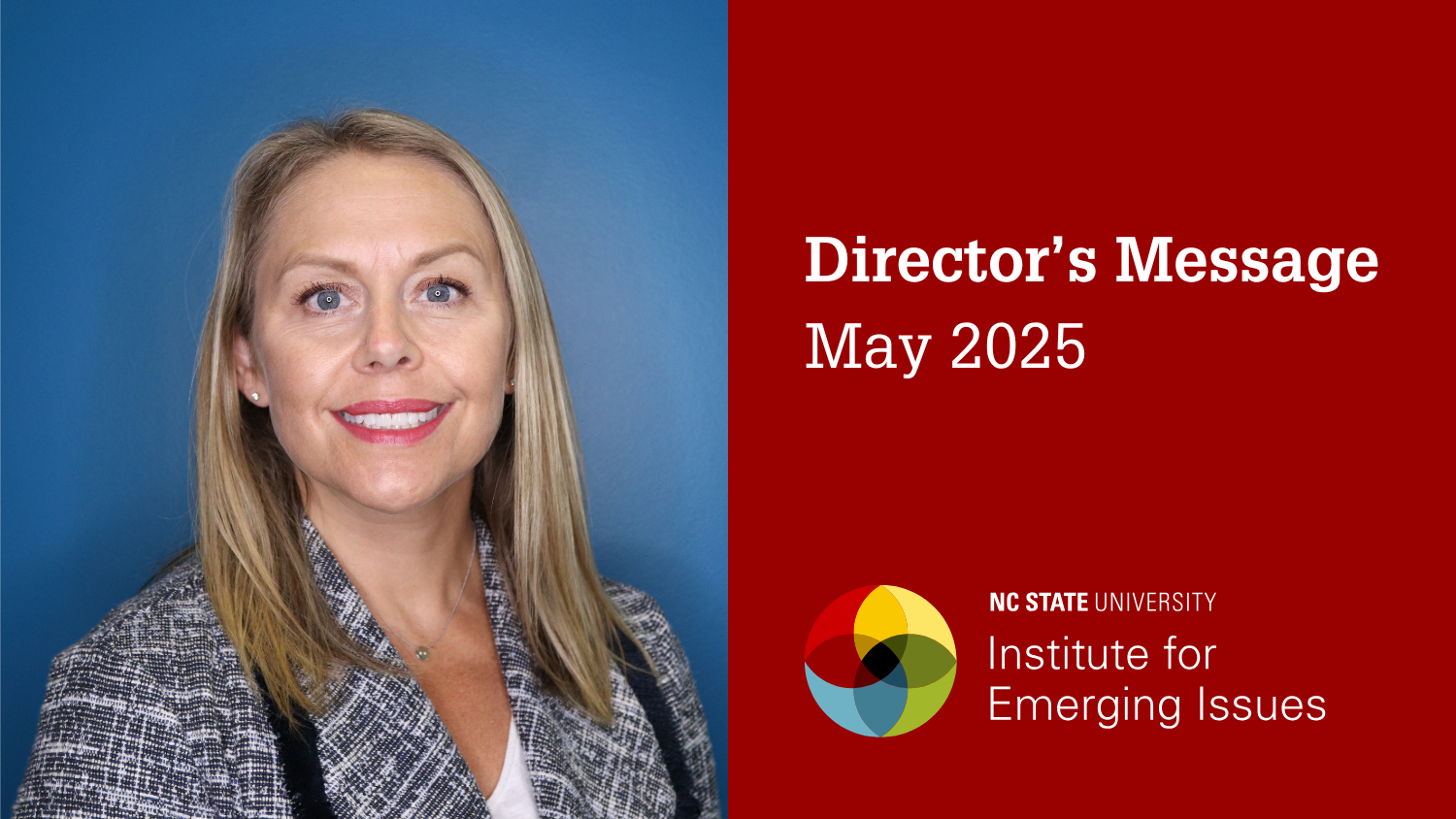Director’s Log | August 2021

From High Conflict to Good Conflict: In Praise of 50 Shades of Gray
There are two kinds of people in this world: people who think there are two kinds of people and those who don’t. Count me in the second group.
We live in a world where everyone—and every algorithm—seems bent on sorting us into binary categories. Some of it is innocuous: Pepsi or Coke; Ford or Chevy; eastern NC BBQ or western; sweet or salty; State or Carolina; boxers or briefs; LeBron or Steph.
But a lot of the binaries get really unforgiving really quickly: conservative or liberal; Republican or Democrat; rich or poor; pro-Arab or pro-Israeli; pro-choice or pro-life; pro-vax or anti-vax. And the message is that there is no room for middle ground or nuance on any of these issues: if you are not with us, you are, by definition, against us; if you are not all in, you are out. Compromise is evil; ideological purity is our highest value.
The challenge is, according to Amanda Ripley, that we are defining more and more issues as “high conflict,” “the kind driven by conflict entrepreneurs, who exploit conflict for their own ends.” As she writes in her book “High Conflict: Why We Get Trapped and How We Get Out,” until we can find a way to take an issue out of the zero sum world of high conflict, she says, no progress is possible on any meaningful issue people disagree on.
During a recent trip to Congress, she met with a group of members with the uninspiring name of the “Select Committee on the Modernization of Congress,” a bipartisan group of 12 that meets by sitting in a round-table format, seriously trying to understand what they might be able to do to get rid of toxic conflict and make real progress on issues they disagree about.
“The overwhelming sense I got,” she writes, “was that they were all miserable. It was not that different from talking to guerrilla fighters or gang members who are utterly exhausted by their conflict—and desperate to get out, if only they could find a path.”
Her recommendation was not to have everyone check their deeply held principles in favor of “bipartisan harmony” but instead to learn how to talk with each other, to have real conversations where they share what she calls “good conflict.”
It’s an idea similar to the one John Hood and Leslie Winner work on through their North Carolina Leadership Forum, and tested out during our Emerging Issues Forum in February 2021—that in order to make any progress on the most divisive issues of our time, we have to raise understanding and lower the volume.
Adam Grant, in his book “Think Again,” describes how binary, A or B thinkers can begin to move more comfortably into a world that may be more gray. “Rethinking,” he says, is the process of doubting what you know and being curious about what you don’t. When we question ourselves we may need to admit that the facts may have changed, and what used to be true might not be any more. Or we may need to admit that the answer to every question is not absolutely yes or no.
When we allow ourselves to do that, we not only leave open the possibility of learning; we also dramatically increase the opportunity to innovate. Frans Johansson’s breakthrough insight in his 2004 book, “The Medici Effect,” was describing the creativity that explodes when people look across disciplinary lines to build teams who see the world from different viewpoints, permitting them to make breathtakingly new discoveries. It’s an insight that continues to guide NC State’s cross-disciplinary Chancellor’s Faculty Excellence Program, which brings together faculty with different kinds of expertise to address problems that no one field can solve.
The opposite, with people sitting arms crossed behind disciplinary or political walls, reduces innovation in science and business and causes gridlock in politics.
That was the probable fate of the federal infrastructure bill earlier this summer in the U.S. Senate until a small group of senators came together to try to hammer out a compromise. Polls showed Americans overwhelmingly favored some version of the bill, but party leaders had created a binary: compromise equalled disloyalty.
A small group of senators came together to figure out a solution. The bill will never be described as a breakthrough in innovation, but it is an example of a willingness to rethink, to stray into gray in order to achieve larger goals.
U.S. Senator Thom Tillis (R-NC) was one of those who voted in favor of the compromise. In explaining his vote, he made two points. One, it wasn’t all bad; there was some good stuff in there. Two, he thought that by voting in favor of a compromise version of a bill Democrats liked, some Democrats would vote with him against ending the filibuster, a vote Republicans worry about.
“There are many provisions of it,” Tillis said, “that I think are positive…(and) I believe by demonstrating we’re willing to work with the Democrats (on the infrastructure bill),” he said, “we can preserve the filibuster.” That’s a pretty rare, nuanced explanation of a tough vote. It’s gray.
Does the Senate vote on the infrastructure bill mean anything? Maybe not—the House may not even pass the bill. But it is one example of a small group of people agreeing to reach across a “high conflict” issue and get it into the “good conflict” zone.
What would happen if folks did that more often—say, for starters, somewhere between the frequency of the setting sun and Jupiter aligning with Mars? What would happen if we could create a new ultimate scorecard for legislation, something different from our current zero-sum, if-your-party-wins-my-party-loses accounting? Maybe the new kind of discussion could be “what’s the proper role of government?” and the new assessment for legislation could be “does this fit that role and help people?”
- Categories:


